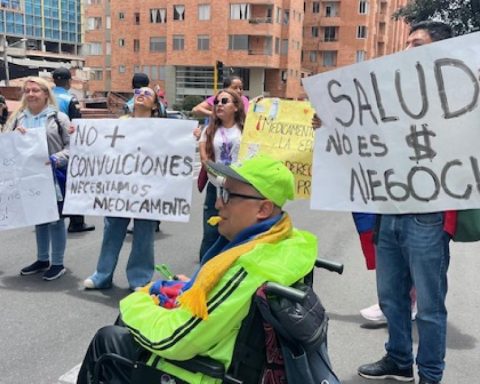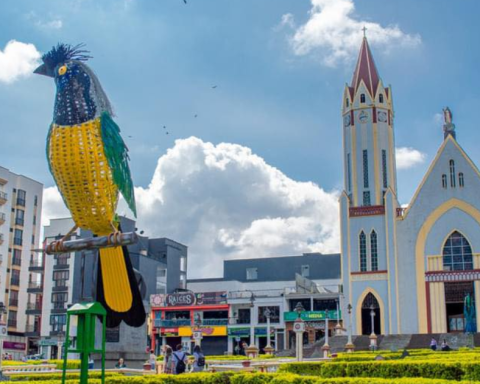The agenda of the new government has in the productive transformation of Colombia one of its central axes. The Republic of Korea has even been singled out as a model, a common example in the literature. on productive development policies (industrial policy for some).
(Read: Taxes that yes or yes would remain in tax, according to Minhacienda).
Without a doubt, this reference is striking. Thus, in 1960 the per capita income in the Republic of Korea was half that of Colombia. In 1980, the per capita income of both countries would have been the same and, after that, the gap in favor of the Asian economy would have only grown, until represent in 2020 more than three times the national average.
And, as mentioned at the Andi meeting, in the mid-1990s (when Korea made the leap from middle income to high income), su inequality was much lower than that observed in Colombia today (0.34 vs. 0.50 according to the Gini index).
The reference to the Korean case (Crespi, G., E. Fernández-Arias and E. Stein (2014), How to rethink productive development? Solid policies and institutions for economic transformation. IDB and Palgrave Macmillan), one of the most studied in development and highlighted as a successful case of evasion of the so-called middle Income Trap, however, he advises widening the focus both in terms of policies and countries.
The OECD Development Center (Melguizo, A., S. Nieto-Parra, JR Perea and JA Pérez (2017). ‘No sympathy for the devil! Policy priorities to overcome the middle-income trap in Latin America’, OECD Working Paper, No. 340), worked an empirical methodology to analyze what social, political and institutional differences exist between the countries that avoided this middle income trap (defined following the Asian Development Bank) (Felipe, J., U. Kumar and R. Galope (2017).’Middle-Income Transitions: Trap or Myth?’, Journal of the Asia Pacific Economy, 22(3): 429-453) most from Asia and Europe, of those remaining for decades ‘trapped’, many Latin Americans. This makes it possible to focus on which policies and areas of action are most frequently present in the success stories.
According to this analysis, the Republic of Korea back in 1995 (the year of its graduation as a high-income economy) showed markedly better levels than Colombia today in governance, quality of secondary education, knowledge content in exports, and level of public investment and private. By the way, hehe tax pressure in Korea in 1995 was 20.2%compared to 18.7% in Colombia in 2020, that is, not as far as in the other dimensions mentioned.
This plurality of spheres of public action should be complemented with a broader view of success stories. Without a doubt, the Korean case is a common example, and the levels of cohesion and equity are praiseworthy objectives, but there is no single development path (Lin, JY (2012). New Structural Economics: A Framework for Rethinking Development, Bank World).
Colombia could be inspired by countries with similar social and productive structures (also in some cases exporters of raw materials) and that have also managed to make the leap in recent decades.
(Also: Ministry of Health requested to prescribe generic contraceptives in the face of shortages).
From the analysis of the OECD it is derived that a reference group for Colombia could be the one formed by Australia, Canada, Denmark, Ireland and Latvia (and personally I would add Israel today for its digital leadership).
Carrying out the same exercise comparing the policies and institutions of Colombia today with this subgroup of relatively similar countries around the year in which each one made the leap, the lag to be corrected would be especially clear in governance and in the quality of secondary education (first column of the attached graph). Opening the comparison to the set of almost 40 economies that have managed to evade since 1950 would add the need to strengthen total tax collection and develop the stock market.
And I would add a transversal axis of digital transformation. ‘Broadband is the new electricity,’ US Vice President Kamala Harris tweeted a while ago. Thus, connectivity to work, study and communicate, together with the digital transformation of the productive sectors around data and algorithms, are key factors for improving public policies and boosting the productivity and efficiency of the economy.
In short, the aspiration to a more productive and equitable Colombia and the call for modern productive development policies are good news. Following the international evidence, it is essential that income and spending redistribution policies -supported without a doubt by the majority of the population- are accompanied by comparable efforts in education (especially in the quality of secondary education), reinforcement of governance and digital transformation.
(Keep reading: Increase in cigarette tax would increase smuggling, says the FND).
The cases of countries in Asia and Europe that just two/three decades ago had per capita income, productivity and inequality challenges similar to those of Colombia, and that today lead the global economy, must be an incentive to try and learn from them. their mistakes and their successes.
Angel Melguizo
Economist and consultant in public and digital policies.
















